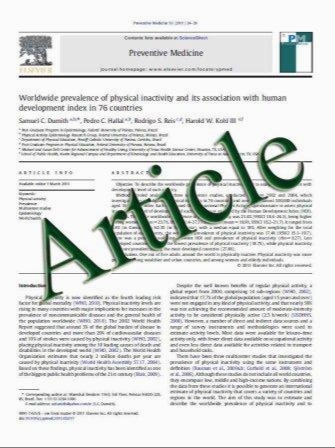Prolactin and Autoimmunity Hyperprolactinemia Correlates with Serositis and Anemia in SLE Patients
- نوع فایل : کتاب
- زبان : انگلیسی
- مؤلف : Hedi Orbach & Gisele Zandman-Goddard & Mona Boaz & Nancy Agmon-Levin & Howard Amital & Zoltan Szekanecz & Gabriella Szucs & Josef Rovensky & Emese Kis
- چاپ و سال / کشور: 2011
Description
Evidence points to an association of prolactin to autoimmune diseases. We examined the correlation between hyperprolactinemia and disease manifestations and activity in a large patient cohort. Age- and sex-adjusted prolactin concentration was assessed in 256 serum samples from lupus patients utilizing the LIASON prolactin automated immunoassay method (DiaSorin S.p.A, Saluggia, Italy). Disease activity was defined as present if European Consensus Lupus Activity Measurement (ECLAM)>2 or Systemic Lupus Erythematosus Disease Activity Index (SLEDAI)>4. Lupus manifestations were grouped by organ involvement, laboratory data, and prescribed medications. Hyperprolactinemia was presented in 46/256 (18%) of the cohort. Hyperprolactinemic patients had significantly more serositis (40% vs. 32.4%, p=0.03) specifically, pleuritis (33% vs. 17%, p=0.02), pericarditis (30% vs. 12%, p=0.002), and peritonitis (15% vs. 0.8%, p=0.003). Hyperprolactinemic subjects exhibited significantly more anemia (42% vs. 26%, p=0.02) and marginally more proteinuria (65.5% vs. 46%, p=0.06). Elevated levels of prolactin were not significantly associated with other clinical manifestations, serology, or therapy. Disease activity scores were not associated with hyperprolactinemia. Hyperprolactinemia in lupus patients is associated with all types of serositis and anemia but not with other clinical, serological therapeutic measures or with disease activity. These results suggest that dopamine agonists may be an optional therapy for lupus patients with hyperprolactinemia.
Clinic Rev Allerg Immunol Springer Science+Business Media, LLC 2011


